Kids' B.A.S.E. and The Little School Appoints Assistant Director
- Details
- Hits: 8667
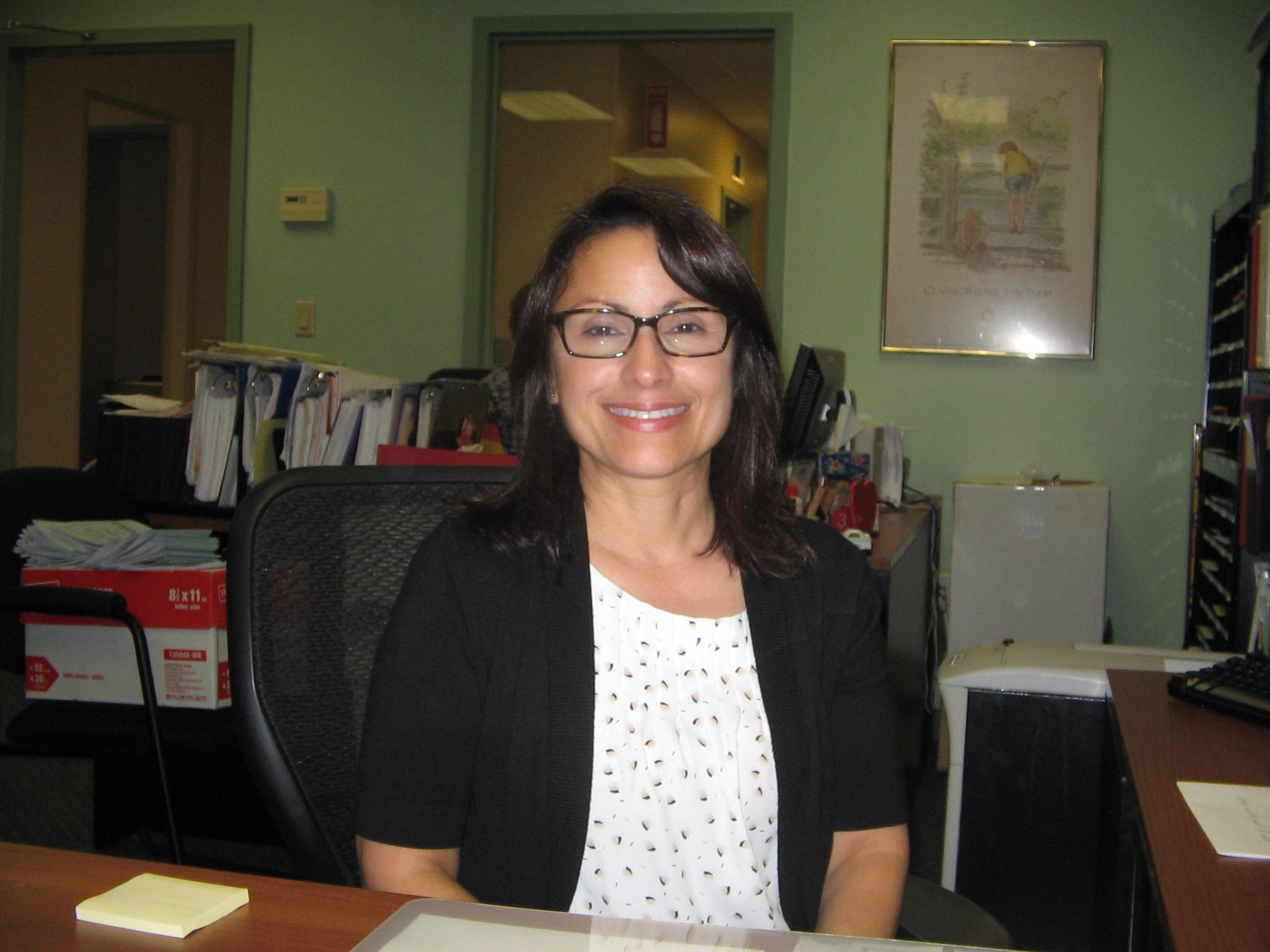 Kids' B.A.S.E. and The Little School (K.B.L.S.) is thrilled to announce the appointment of Carmelita Bota as Assistant Director effective for the 2013-2014 school year. Ms. Bota has been an Early Childhood Director for over 20 years managing profit and non-for-profit Early Childhood Education (ECE) programs. Most recently, Ms. Bota served as the Director of St. James the Less Nursery School. Among her accomplishments, Ms. Bota established the first on-site intergenerational program in Westchester County called the Caring Connection that received numerous awards. She also helped establish the EastRidge Enrichment Center, the first corporate sponsored center through the American Business Collaboration for employees of EastRidge Properties, IBM, PepsiCo, Texaco, Bell Atlantic and MasterCard, and was awarded the Parent Partnership Award by Corporate Family Solutions for her accomplishments in work family issues.
Kids' B.A.S.E. and The Little School (K.B.L.S.) is thrilled to announce the appointment of Carmelita Bota as Assistant Director effective for the 2013-2014 school year. Ms. Bota has been an Early Childhood Director for over 20 years managing profit and non-for-profit Early Childhood Education (ECE) programs. Most recently, Ms. Bota served as the Director of St. James the Less Nursery School. Among her accomplishments, Ms. Bota established the first on-site intergenerational program in Westchester County called the Caring Connection that received numerous awards. She also helped establish the EastRidge Enrichment Center, the first corporate sponsored center through the American Business Collaboration for employees of EastRidge Properties, IBM, PepsiCo, Texaco, Bell Atlantic and MasterCard, and was awarded the Parent Partnership Award by Corporate Family Solutions for her accomplishments in work family issues.
"Carmelita brings a wealth of knowledge to our school and I look forward to working with her over the upcoming years," says Executive Director Deborah Fine.
Ms. Bota holds BA and MS degrees in Early Childhood and Elementary Education, a Montessori Pre-Primary credential, a New York State Early Childhood Trainer's credential, is a recognized ECE trainer by the Office of Children and Family Services, a training coordinator for the Child Care Council of Westchester, and has instructed ECE college level courses in collaboration with Empire State College.
Board President David Liebewitz states that: "Ms. Bota is already a part of the Scarsdale community and we look forward to having her at K.B.L.S., where we know she will be a great asset to the school!"
Ms. Bota is the mother of two sons. She says, "they have been an enormous inspiration to me, as a working mother, to provide the best quality programs for children". When not working, Carmelita enjoys photography and cooking.
K.B.L.S. offers the highest quality of educational, social, and care experiences possible for resident Scarsdale children from age 3 through Grade 6 under the leadership of Executive Director Deborah Fine and a Board of Trustees comprised of community residents. Kids' B.A.S.E. and The Little School are accredited by the National Association for the Education of Young Children, chartered by the NYS Board of Regents, and licensed by the NYS Office of Children and Family Services. K.B.L.S. offers year-round extended hours of operation to accommodate children and families through a range of programs including:
• The Little School: Scarsdale's premier preschool program with classes for 3s and 4s.
• Kids' B.A.S.E.: Before- and after-school enrichment and care programs for children in grades K-6.
• The Little School Summer Enrichment Camp: Full of fun learning experiences, swim instruction, crafts, sports, and daily swim.
• Summer Set Before-and-After Camp Enrichment: Summer enrichment programming for children in grades K-5.
Click here to visit their website.
SSTTE Names New Director of Youth Engagement
- Details
- Hits: 4977
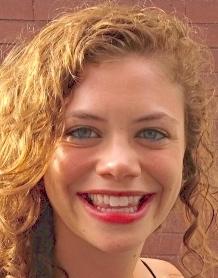 Maura Koenig has joined the professional staff of Scarsdale Synagogue Temples Tremont and Emanu-El (SSTTE) as its new Director of Youth Engagement, it was announced by Ellen Baken, president of this leading Westchester Reform Jewish congregation.
Maura Koenig has joined the professional staff of Scarsdale Synagogue Temples Tremont and Emanu-El (SSTTE) as its new Director of Youth Engagement, it was announced by Ellen Baken, president of this leading Westchester Reform Jewish congregation.
Ms. Koenig comes to Scarsdale Synagogue from Temple Shaaray Tefila in New York City, where she worked with that Reform Jewish congregation's Director of Informal Learning on an exchange program with Israeli teens, as well as planning for, and chaperoning at, a variety of social action and religion-oriented teen activities. A 2011 graduate of SUNY Oswego, she spent her own teen years deeply involved in temple youth group activities in Syracuse, NY, including leading a National Federation of Temple Youth trip to Israel. In her new position, Ms. Koenig succeeds Ivy Cohen, who is moving to Louisiana, where she will oversee and coordinate youth engagement efforts among several Reform synagogues in New Orleans area.
"As I begin my second year at Scarsdale Synagogue," said Rabbi Jeffrey C. Brown, "I feel blessed to be teamed with Cantor Becker on the pulpit, with Rabbi Pein newly heading our religious school, with Jody Glassman in our well-regarded Mazel Tots® early childhood program and, now, Maura to work with the kids who represent the next generation of committed Jewish adults."
Ms. Baken commented, "Our Synagogue's search teams have now completed an impressive multi-year process of adding high-energy experienced professionals to connect with our congregation and the Westchester Jewish community at all levels. We look forward to Maura spearheading our busy and exciting youth engagement initiatives, and making the new youth lounge, which we completely renovated and dedicated last March, even more of a hub for relaxed but productive times for our teens and pre-teens."
About Scarsdale Synagogue
Scarsdale Synagogue Temples Tremont and Emanu-El is a Reform Jewish congregation committed to creating, with and for its 500 member families, a covenant community of shared lives and real relationships. Founded in 1961, the Synagogue was joined by the memberships of Tremont Temple of the Bronx in 1976 and Temple Emanu-El of Southern Westchester in 2008. For further information, contact Gary Katz at [email protected] or 914-725-5175.
Scarsdale Bar-Mitzvah Boy Uses Gift Money to Help Establish Basketball Team for Ethiopian Children in Israel
- Details
- Hits: 17682
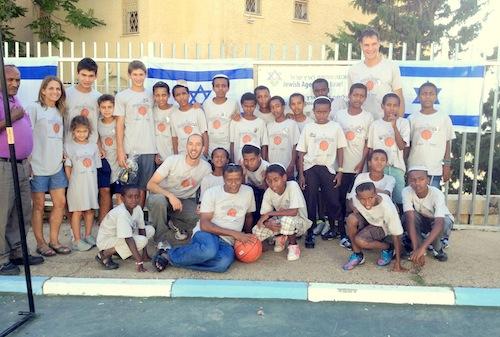 The northern Israeli city of Safed, known for its beauty and as an historic center of Jewish mysticism, has welcomed a new basketball team to town care of a bar-mitzvah boy from New York. Basketball fan Josh Wasserman of Scarsdale decided to donate his bar-mitzvah gifts to establish the team and renovate a new court for children who live in a center for new Ethiopian immigrants in Safed.
The northern Israeli city of Safed, known for its beauty and as an historic center of Jewish mysticism, has welcomed a new basketball team to town care of a bar-mitzvah boy from New York. Basketball fan Josh Wasserman of Scarsdale decided to donate his bar-mitzvah gifts to establish the team and renovate a new court for children who live in a center for new Ethiopian immigrants in Safed.
Josh decided he wanted to do something to help economically disadvantaged children in Israel after hearing stories about how little some kids there have from his father David Wasserman, who had just returned from a UJA-Federation of New York mission to the country.
Together with UJA-Federation's "Give a Mitzvah-Do a Mitzvah" program, Josh and his family — also big lovers of basketball — thought it would be a great idea to bring something they are passionate about to the Ethiopian children in Safed. He decided to donate gifts from his bar mitzvah to make the new team a reality. Josh's siblings also wanted to take part in the project and donated from their own savings as well.
Josh's bar mitzvah gift covers the renovation of the court, the hiring of a new coach for a year-long training program, and buying special uniforms with the name "Team Wasserman" printed in both English and Hebrew.
Josh plays on several basketball teams in New York, including an American Athletic Union (AAU) basketball team called the Riverhawks, the Temple Israel Center of White Plains team, and beginning this fall he will play for the Scarsdale High School team. His older brother, Daniel, 16, also plays basketball for Temple Israel in White Plains (he represented the United States on the Juniors soccer team in the 19th Maccabiah Games in Israel last month), and younger brother Adam, 10, is also on an AAU basketball team. His sister Hannah, 6, is just starting to play sports. David, their father, played basketball at Amherst College, and their mother, Carolyn, participated on the Maccabiah Track and Field team several times.
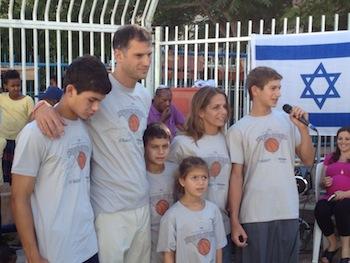 "I was looking for a way to do something special and meaningful in connection with my bar mitzvah. Since my family and I are passionate about the sport of basketball, we were thrilled to find a way to allow Israeli kids to experience the sport that we love so much. I'm so fortunate that I'm able to give the kids in Safed the chance to play competitive basketball on a real team with their own coach and new court," said Josh Wasserman.
"I was looking for a way to do something special and meaningful in connection with my bar mitzvah. Since my family and I are passionate about the sport of basketball, we were thrilled to find a way to allow Israeli kids to experience the sport that we love so much. I'm so fortunate that I'm able to give the kids in Safed the chance to play competitive basketball on a real team with their own coach and new court," said Josh Wasserman.
"Give a Mitzvah–Do a Mitzvah program of the UJA-Federation of New York enables bar and bat mitzvah students to create their own unique mitzvah project that connects their interests and hobbies," said Brittany Wayne of UJA-Federation of New York. "Josh's project is truly amazing. Not only does it provide other young kids with a great example of how to become more involved in philanthropy, it also helps to strengthen the relationship between the Jewish community in New York and in Israel."
A special dedication ceremony took place today at the Ethiopian Absorption Center in Safed. Josh Wasserman and his family joined the kids there to officially open the new basketball court. Speakers at the ceremony included Ilan Halperin, representative of UJA-Federation in Israel.
Photos from Ceremony:
Top Photo: The Wasserman family with the new team.
Photo credit: Ilan Halperin
Scarsdale Swimmers Make Waves at The Counties
- Details
- Hits: 9286
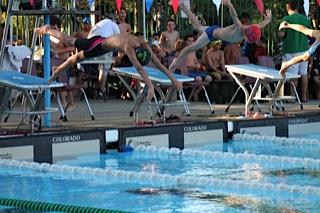 Scarsdale swimmers are making waves at "The Counties," the Westchester County Swimming Association 88th Annual Championship swim meet, at the Rye Playland Pool from July 29 to August 1. Scarsdale swimmers representing teams at Wykagyl Country Club and the Scarsdale Municipal Pool are excelling in the meet. Five Scarsdale families are swimming for Wykagyl Country Club and many of these swimmers are qualifying for finals each night – a great accomplishment for these young athletes.
Scarsdale swimmers are making waves at "The Counties," the Westchester County Swimming Association 88th Annual Championship swim meet, at the Rye Playland Pool from July 29 to August 1. Scarsdale swimmers representing teams at Wykagyl Country Club and the Scarsdale Municipal Pool are excelling in the meet. Five Scarsdale families are swimming for Wykagyl Country Club and many of these swimmers are qualifying for finals each night – a great accomplishment for these young athletes.
The Scarsdale children who swim for Wykagyl are: Michael and Justin DiSanto; Emmeline and Scotty Berridge; Aidan, Megan, Brendan and Ryan Lee; Sophie and Mia Carroll; Claire, Joseph and Elizabeth Scarcella.
On Monday July 29, the first night of The Counties, the relay team of Ryan and Brendan Lee (Scarsdale) along with Austin Graham (Larchmont) and Steven Amato (Eastchester) won the boys 13u 200 medley relay breaking a record that had been set in 2002. Megan Lee placed 6th in the girls 10u 50 breast, Justin DiSanto placed 1st in the boys 10u 50 breast and Brendan Lee placed seventh in the boys 12u 50 backstroke.
On Tuesday, July 30 the relay team of Justin DiSanto and Aidan Lee (Scarsdale) along with Jason Amato (Eastchester) and Ian Steffensen (New Rochelle) placed first in the 10u boys 200 medley relay; Megan Lee placed sixth in the girls 10u 50 free, Justin DiSanto placed first in the 10u boys 50 free; Ryan Lee placed first in the boys 13u 200 IM and Brendan Lee placed seventh in the boys 12u 50 butterfly.
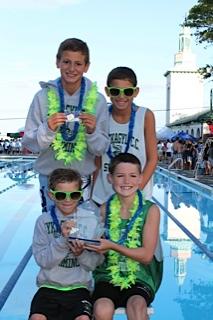 On Wednesday July 31, the Wykagyl 10u boys relay team of Justin DiSanto, Aidan Lee, Jason Amato and Ian Steffensen again took first place – this time in the 200 freestyle relay. Additionally, Justin DiSanto finished second in the 10u boys 50 back and Brendan Lee finished fifth in the boys 12u 50 breast. The 17u girls 200 medley relay team consisting of Scottie Berridge (Scarsdale), Madeline Simone (Larchmont), Dulcie DelPriore and Ellie Provenzano (New Rochelle) placed fourth. The meet continues Thursday at Playland Pool. All results can be found on www.wcsa.usswim.net.
On Wednesday July 31, the Wykagyl 10u boys relay team of Justin DiSanto, Aidan Lee, Jason Amato and Ian Steffensen again took first place – this time in the 200 freestyle relay. Additionally, Justin DiSanto finished second in the 10u boys 50 back and Brendan Lee finished fifth in the boys 12u 50 breast. The 17u girls 200 medley relay team consisting of Scottie Berridge (Scarsdale), Madeline Simone (Larchmont), Dulcie DelPriore and Ellie Provenzano (New Rochelle) placed fourth. The meet continues Thursday at Playland Pool. All results can be found on www.wcsa.usswim.net.
Swimmers from the Scarsdale Municipal Pool also placed in many of the races this week. Here are their results: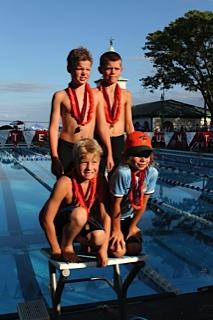
- On Monday, Joy Jiang came in fourth in the girls 10u 50 breaststroke race. Daniel Needham came in eighth in the Boys 17u 100 fly.
- On Tuesday, the Scarsdale girls 10u relay team took fifth place in the 200 medley relay with Danielle Eforo, Joy Jiang, Arden Costello and Helena Leroy. The boys 10u relay team placed sixth with Rowan Haffner, Thomas Peckett, Ivan Sinyarin and Sam Denison. Also, Graham Novitch placed seventh in the boys 14u 50 back.
- On Wednesday, Joy Jiang took first in the girls 10u 50 back, breaking a record set in 1994. Graham Novitch took fifth in the boys 14u 100 fly and the 10u boys 200 freestyle relay team of Ivan Sinyavin, Dylan Jansky, Rowan Haffner and Thomas Peckett placed fifth.
Next week is the Westchester Conference Championship meet with prelims Monday through Wednesday at various pools and the finals on Thursday at Westchester Country Club.
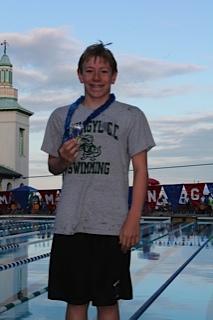
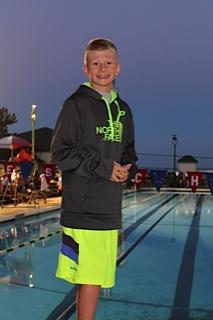
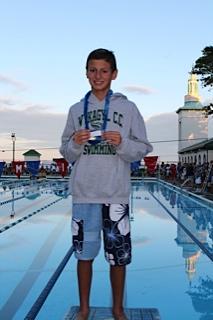
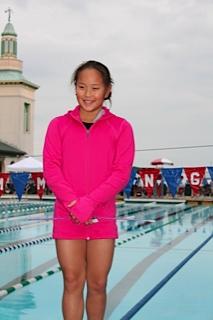
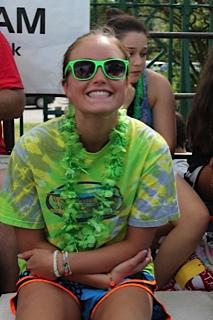

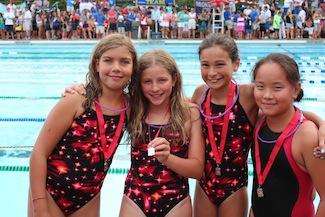
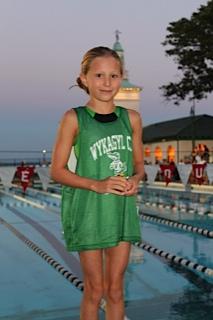
What's Eating You?
- Details
- Written by: Joanne Wallenstein
- Hits: 5585
 I was at first surprised and now dismayed at the increasingly hostile comments we are receiving at Scarsdale10583 in response to opinion pieces, news and profiles published on the site. Though we are an educated and opinionated community, we are also among the most fortunate. Our median income outstrips most villages in the state and the country, we have a fine school system, wonderful community resources like the Scarsdale Pool, recreation camp and sports facilities and a Village government and emergency response teams that are at-the-ready to answer any of our needs.
I was at first surprised and now dismayed at the increasingly hostile comments we are receiving at Scarsdale10583 in response to opinion pieces, news and profiles published on the site. Though we are an educated and opinionated community, we are also among the most fortunate. Our median income outstrips most villages in the state and the country, we have a fine school system, wonderful community resources like the Scarsdale Pool, recreation camp and sports facilities and a Village government and emergency response teams that are at-the-ready to answer any of our needs.
By any measure we are lucky to live here. Yet, reading the comments we receive there is little acknowledgement of what's good and abusive condemnation of what's perceived as bad. Whether it's teachers' salaries, real estate taxes, electric service, or even a new dog store, some of our readers don't mince words when crafting their comments and usually do not add their names to their posts either.
In the past few months, comments have become increasingly bitter – and often include attacks on our contributors, neighbors, those who work in the Scarsdale community and Scarsdale10583.com itself.
While we value your opinions we are concerned about the overall tone of your comments and ask you to keep the following in mind:
- The site is offered to you, our readers, at no cost to you. You are free to read it and free to read selectively. If you don't care for an article, there's no obligation to give it your time.
- To the commenter who recently wrote, "This publisher has come up with a great cash cow," we can assure you that four years since we began publication, we are still looking for that cow. We are creating this community forum for you and hope you can do your part to keep it civil.
- We are a community website, covering items of interest to the Scarsdale community. If someone from Scarsdale is in the national news we will cover it as well. In order to be relevant, we need to publish information about the town and local residents.
- The articles that are most controversial are naturally the most widely read, often receiving ten times the attention given to articles on Village meetings and charitable events. Therefore, those of you who have asked us to refrain from publishing news about people like the "marijuana mom," have been outvoted by your peers who gave this story 5,700 hits.
- To answer this comment that was received recently: "Dear Editor of this Site, Just an observation...the types of stories which do NOT work well on this site are OPINION pieces. Your opinion on Sanderlin or the school budget isn't any more relevant than anyone else's and you are seeing that many residents are clearly expressing that they share a different opinion. As a "journalist" you probably should stick to reporting the facts and let the reader form their own varying opinions, which could be expressed in the comments if a reader so chose. Very hard to be a commentator and a reporter of news." Again, the opinion pieces are among the most read articles on the site. And, why would we publish this site if we could not voice our views? We are interested in your views as well. Next time you have a comment, rather than dash off a flip, anonymous comment, please draft a letter and send it to us at [email protected] for publication. Please stand by what you have to say by including your name and street address.
Rest assured that all comments are reviewed before publication and we will be judicious about omitting comments that are insulting or damaging to our contributors, neighbors and community. Our goal is to foster an environment for a constructive and healthy exchange of ideas and we are asking you to do your part to maintain the tenor of Scarsdale10583.










